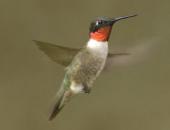Local News
NOW HIRING! Position for 4-H Youth Development Program Associate
June 22nd 2018 by Dee Loflin

NOW HIRING! Position for 4-H Youth Development Program Associate in Stoddard County.
Twenty (20) hours per week.
Required qualifications: An Associates' Degree or an equivalent combination of education and experience and some experience from which comparable knowledge and skills can be acquired is necessary.
The 4-H Youth Program Associate will assist in the planning, management and support of 4-H Youth Development programs in assigned geographic area, under the guidance and supervision of the 4-H Youth Development Specialist.
Starting salary $12.04 per hour. Training provided. Must have transportation. Mileage paid.
Application may be obtained online.
Online job description and application: https://extension.missouri.edu/about/jobs.aspx
Applications will be accepted until 4 pm Friday, July 13, 2018.
Interviews will be scheduled later.
MU is an affirmative action/equal opportunity employer.
Last Updated on June 22nd 2018 by Dee Loflin
https://showmetimes.com/Blogpost/vals/NOW-HIRING-Position-for-4H-Youth-Development-Program-Associate





